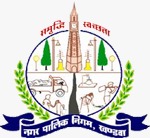Khandwa is a city and a nagar nigam in the Nimar region of Madhya Pradesh, India. It is the administrative headquarters of Khandwa District, formerly known as East Nimar District.
Khandwa is an ancient city, with many places of worship, like many other cities in India. Most temples are Hindu or Jain. During the 12th century CE, it was a centre of Jainism. During British rule, it replaced nearby Burhanpur (now a separate district) as the main commercial centre of the west Nimaad region.
Khandwa is a major railway junction; the Malwa line connecting Indore with the Deccan meets the main east–west line from Mumbai to Kolkata.
Khandwa has a major railway junction located on the Jabalpur-Bhusaval section of Howrah-Allahabad-Mumbai line, one of India’s most heavily used railway lines, with daily connections to Mumbai, Pune, Delhi, Goa, Cochin, Kolkata, Indore, Bhopal, Patna, Allahabad, Lucknow, Jammu, Hyderabad, and Bangalore. It also has an airstrip which is rarely used for occasional aircraft landings, located on Nagchun Road.
Khandwa is famous for its local crops of cotton, wheat (Khandwa2), soybean, and a variety of seasonal fruits and vegetables. Its wheat variety Khandwa2 is famous nationwide for its aroma, colour and quality. Legendary actor/singer Kishore Kumar was born in Khandwa. Earlier Khandwa was the only city in Central India which cultivates cannabis (ganja).
Khandwa is known for its four Kunds located in four directions of the city, called Padam Kund, Bheem Kund, Suraj Kund and Rameshwar Kund. The famous tourist places of Khandwa are Dada Darbar khandwa,[4] Nagchun Talab and Hanumantiya Island, a new place for adventurous water sports in the back waters of Indira Sagar Dam. The town recently got fame due to the 2016 Hollywood movie Lion, which was based on the extraordinary search for his birth family by Khandwa born Saroo Brierley, who got lost as a child and ended up in Australia after being adopted.
